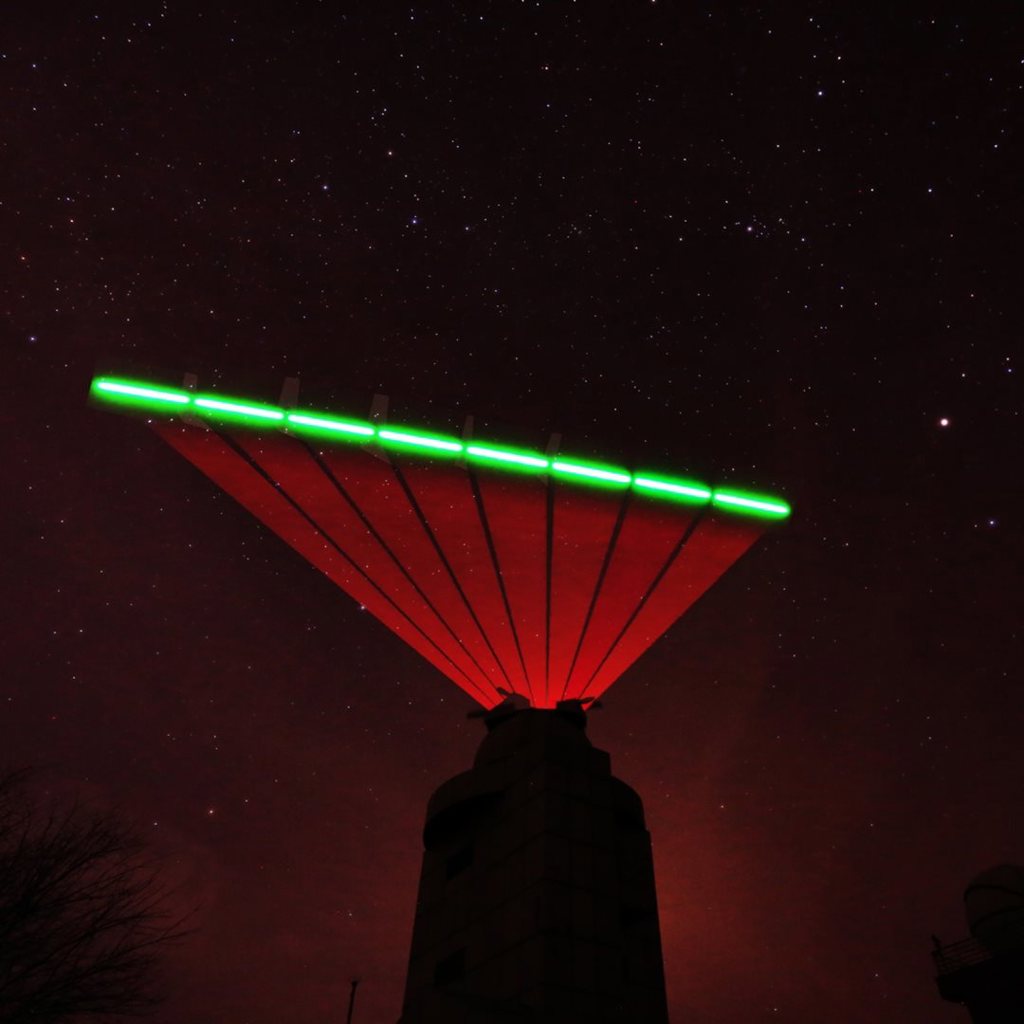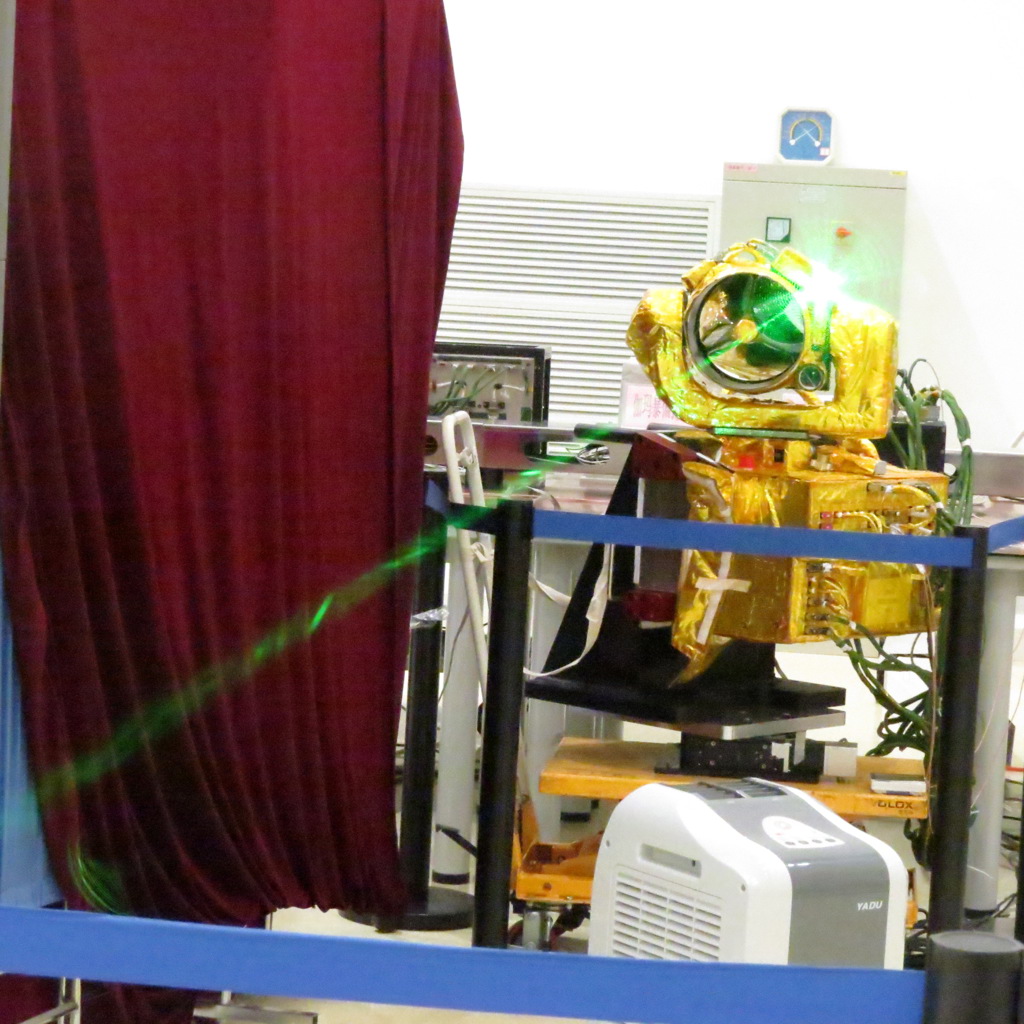Compact QKD system paves the way to cost-effective satellite-based quantum networks
About Optica
18 August 2022
Compact QKD system paves the way to cost-effective satellite-based quantum networks
Researchers demonstrate successful quantum key distribution between space lab and four ground stations
WASHINGTON — Researchers report an experimental demonstration of a space-to-ground quantum key distribution (QKD) network using a compact QKD terminal aboard the Chinese Space Lab Tiangong-2 and four ground stations. The new QKD system is less than half the weight of the system the researchers developed for the Micius satellite, which was used to perform the world’s first quantum-encrypted virtual teleconference.

Caption: Researchers experimentally demonstrated a space-to-ground QKD network using a compact QKD terminal aboard the Chinese Space Lab Tiangong-2 and four ground stations.
Image Credit: Cheng-Zhi Peng, University of Science and Technology of China
The demonstration represents an important step toward practical QKD based on constellations of small satellites, a setup considered one of the most promising routes to creating a global quantum communication network.
“QKD offers unconditional security by using single photons to encode information between two distant terminals,” said research team member Cheng-Zhi Peng from the University of Science and Technology of China. “The compact system we developed can reduce the cost of implementing QKD by making it possible to use small satellites.”
Peng and researchers from other institutions in China describe their new system and experimental results in Optica, Optica Publishing Group’s journal for high-impact research. They also found that QKD performance can be boosted by building a network of satellites orbiting at different angles, or inclinations, in relation to the equator.
“Our new work demonstrates the feasibility of a space-ground QKD network based on a compact satellite payload combined with constellations of satellites with different orbit types,” said Peng. “In the near future, this type of QKD system could be used in applications that require high security such as government affairs, diplomacy and finance.”
Shrinking the QKD system
QKD uses the quantum properties of light to generate secure random keys for encrypting and decrypting data. In previous work, the research group demonstrated satellite-to-ground QKD and satellite-relayed intercontinental quantum networks using the Micius satellite. However, the QKD system used aboard that satellite was bulky and expensive. About the size of a large refrigerator, the system weighed around 130 kg and required 130 W of power.

Caption: The researchers created the compact payload — shown here in ground experiments— that allowed the Tiangong-2 Space Lab to act as a satellite QKD terminal. It included a tracking system, QKD transmitter and a laser communication transmitter.
Image Credit: Cheng-Zhi Peng, University of Science and Technology of China
As part of China's quantum constellation plan, the researchers sought to develop and demonstrate a more practical space-ground QKD network. To do this, they developed a compact payload that allowed the Tiangong-2 Space Lab to act as a satellite QKD terminal. The QKD payload — consisting of a tracking system, QKD transmitter and a laser communication transmitter — weighed around 60 kg, required 80 W of power and measured about the size of two microwave ovens.
“This payload was as integrated as possible to reduce volume, weight and cost while achieving the high performance necessary to support space-to-ground QKD experiments,” said Peng. “It also had to be very durable to withstand harsh conditions such as the severe vibration experienced during launch and the extreme thermal vacuum environment of space.”
The researchers performed a total of 19 QKD experiments during which secure keys were successfully distributed between the Space Lab terminal and four ground stations on 15 different days between October 2018 and February 2019. These experiments were conducted at night to avoid the influence of daylight background noise.
The researchers found that the medium (~42°) inclination orbit of the space lab allowed multiple passes over a single ground station in one night, which increased the number of keys that could be generated. They also built a model to compare the performance of satellite-based QKD networks with different orbit types. They found that combining satellites with a medium-inclination orbit like the space lab with a sun-synchronous orbit that travels over the polar regions achieved the best performance.
Next steps
The researchers are now working to improve their QKD system by increasing the speed and performance of the QKD system, reducing cost, and exploring the feasibility of daytime satellite-to-ground QKD transmission. “These improvements would allow a practical quantum constellation to be created by launching multiple low-orbit satellites,” said Peng. “The constellation could be combined with a medium-to-high-orbit quantum satellite and fiber-based QKD networks on the ground to create a space-ground-integrated quantum network.”
Although not part of this work, an even smaller quantum satellite developed by Hefei National Laboratory and University of Science and Technology of China and other research institutes in China was successfully launched into space on July 27. This satellite, known as a micro/nano satellite, weighs about a sixth the weight of the Micius satellite and contains a QKD system that is about a third of the size of that demonstrated in the Optica paper. That satellite is designed to carry out real-time satellite-to-ground QKD experiments, representing another important step toward low-cost and practical quantum satellite constellations.
Paper: Y. Li, S.-K. Liao, Y. Cao, J.-G. Ren, W.-Y. Liu, J. Yin, Q. Shen, J. Qiang, L. Zhang, H.-L. Young, J. Lin, F.-Z. Li, T. Xi, L. Li, R. Shu, Q. Zhang, Y.-A. Chen, C.-Y. Lu, N.-L. Liu, X.-B. Wang, J.-Y. Wang, C.-Z. Peng, J.-W. Pan, “Space-ground QKD network based on a compact payload and medium-inclination orbit,” 9, 8 (2022).
DOI: 10.1364/OPTICA.458330.
About Optica Publishing Group
Optica Publishing Group is a division of the society, Optica, Advancing Optics and Photonics Worldwide. It publishes the largest collection of peer-reviewed and most-cited content in optics and photonics, including 18 prestigious journals, the society’s flagship member magazine, and papers and videos from more than 835 conferences. With over 400,000 journal articles, conference papers and videos to search, discover and access, our publications portfolio represents the full range of research in the field from around the globe.
About Optica
Optica is an open-access journal dedicated to the rapid dissemination of high-impact peer-reviewed research across the entire spectrum of optics and photonics. Published monthly by Optica Publishing Group, the Journal provides a forum for pioneering research to be swiftly accessed by the international community, whether that research is theoretical or experimental, fundamental or applied. Optica maintains a distinguished editorial board of more than 60 associate editors from around the world and is overseen by Editor-in-Chief Prem Kumar, Northwestern University, USA. For more information, visit Optica.
Media Contact
